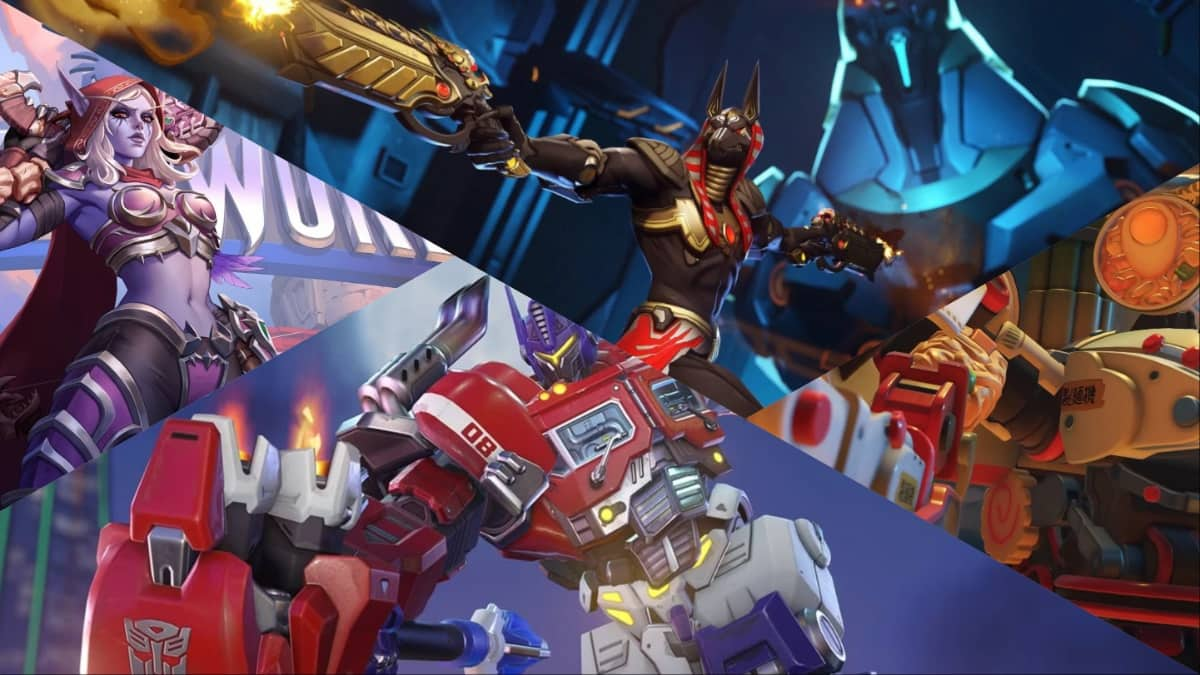When you’re climbing the ranks in Overwatch 2, you’ll eventually reach a point where your mechanical prowess won’t be enough to carry you anymore.
That’s when game sense can make all the difference in your competitive matches.
Former professional Overwatch 2 coach Spilo explained the key component to winning teamfights using macro vision, which he calls the line. By following this concept, players will generally perform better as a teammate.
Related: The best counters for each Overwatch 2 hero
In a recent video on YouTube, Spilo described the line as the “exact spot on the map, the general line where the enemy crosses into the space we want to control.”
It’s where fights will happen, and in a fast-paced game like Overwatch 2 it’s “always shifting with the objective, so you have to position very quickly.”
Knowing precisely where the line is at every point is vital to positioning yourself better and avoiding being punished by enemies.
Sometimes, you’ll hear tanks complaining about a lack of healing or healers complaining about being constantly killed by flankers. This is often due to them not respecting the line and mispositioning themselves rather than a lack of support from teammates.
Identifying where the line is and playing around it to win teamfights
The tricky part is to identify where the line is. The one criterion players should consider is to find the highest “impact, top priority on your team and play around that.” It means that in a specific situation, one player will have more potential to get kills than others. You should focus on that hero.
As a healer, you’ll want to be able to heal them. As a tank, you’ll want to create space or protect them. As a DPS, you’ll generally have to get to another spot to cover more ground and bear maximum impact.
The coach gave examples on numerous maps to illustrate that tricky concept. We’ll focus on King’s Row’s first point as an example in this article. Here are a few locations possible for the line when you defend the first point of King’s Row:

Knowing where the line is will depend on your team’s composition and the enemy’s. “Sometimes, people take position literal while it depends on what they’re doing. When the line is shifted, I have to shift as well,” Spilo explained.
On line one, for example, if you have a tank with a shield, they could make all the difference —because this is a highly dangerous spot and you’ll need protection.
Pushing too close to the spawn is a frequent mistake, so this situation might present itself often. “Sometimes, your position is not optimal, but you have to keep contributing to the team”, he added.
So if you’re playing healer and both DPS have followed the tank’s aggressive push in the King’s Row example, the fight will happen in front of the spawn.
Even if you think it’s a bad idea, you’ll have to be more aggressive and go closer to the spawn to contribute to your team. Otherwise, you’ll become useless, not able to heal your tank, and vulnerable to snipers and flankers.
As a flanker, you’ll want to wait for enemies to be exposed to your allies to engage. That way, if all of them turn around to focus on you, they’ll be vulnerable to your allies and your impact will be much greater.
On line two, Mei can be the carry because her wall can single out opponents that are trying to push through the choke point. Then, the team should play around her.
On the third line, snipers can negate an enemy push with the correct positioning on windows and balconies. You can also have a Pharah or an Echo, who will have many options to defend the point. They might be heroes who become a top priority at that moment.
Don’t tunnel-vision, be aware of your allies’ position at all times
To know who will have the best impact, you need a strong game sense: knowing each hero’s strengths and weaknesses, their counters, and more. It requires experience to know this, but it’ll also make all the difference when you play at a high level, whether it’s in premade teams or in a solo queue setup.
“This is what it makes it really hard,” said Spilo. “Where you take fights depends on the outliers in the composition, who would benefit the most from exposition on that spot. Even in ranked, you can do that. Use your eyeballs. Look where people set up. Turn around before the fight starts.”
That’s the one vital tip Spilo gave to players who are willing to climb the Overwatch 2 ranks. They have to be aware of their surroundings and adjust to their team at all times, even if they disagree with the team’s overall strategy.







Published: Mar 10, 2023 04:40 am